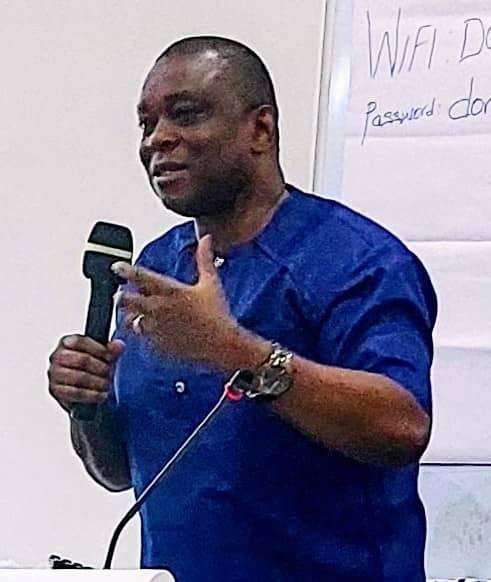How Not To Conduct Large-Scale Agricultural Investments:
Lessons from the Malen/Socfin Land Dispute in Sierra Leone
Background
The website of Socfin Agriculture Company Ltd (SAC) paints a picture of turbulence. A series of posts stretching as far back as 2013 reveal the company has been under pressure from community members and civil society organisations over its acquisition of land in Malen chiefdom, southern Sierra Leone. “How safe [are] foreign investments in Sierra Leone: President Bio must know this” one headline reads. “No land grabbing in Malen Chiefdom” announces another. “Salone gov’t exonerates Socfin of land grabbing” claims a third. “Sierra Leoneans destroy country’s image abroad” declares another. The company has been accused of undermining food security in the chiefdom by its huge acquisition and then leveraging its relationship with the government to intimidate those in the community who opposed the deal. The community and the company have both petitioned the new government to help resolve the impasse. (Photo: Sonkita Conteh, author)
SAC is a subsidiary of the Luxembourg-based Socfin Group, which invests in oil palm and rubber plantations. The group has operations in eight west and central African and two south-east Asian countries, managing a total of fifteen agro-industrial projects. The group controls nearly 200,000 hectares of land, an area twenty-four times the size of Freetown.
The group claims that it received a request from the Sierra Leone government in 2010 to set up a modern oil palm plantation in order to supply the domestic market with vegetable oil. In September 2012, the national government and SAC signed a binding Memorandum of Understanding (MoU) setting out the parameters of the investment, including a raft of tax and duty waivers and exemptions in favour of the company. The MoU acknowledged that SAC had already negotiated land lease agreements with the national government.
Two years earlier, in February 2010, the national government entered into a similar MoU with another large-scale agribusiness company, the Swiss-owned Addax Bioenergy for a 30,000-hectare sugarcane project in Bombali district. In contrast to SAC, Addax had negotiated lease agreements directly with the chiefdom councils and landowners.
A flawed approach
Land in rural areas, where both these investments are located, is governed by customary law and owned by families or communities. Chiefdom councils, headed by paramount chiefs, act as trustees over the land, as stated under a 1927 law which regulates how non-indigenes, like companies, can acquire certain interests, like leases, in provincial lands. Under a government policy to promote private investments in agriculture, landowners only retain 50% of the rent (pegged at $5 per acre annually) paid by companies. The other half is shared by chiefdom, district and national government institutions.
In March 2011 the national government signed a lease agreement for 16,248 acres (6,575 ha) of land with the Malen chiefdom council and landowners for 50 years with an option to renew for a further 21 years, at the yearly rent of $5 per acre. The agreement covered land in five of the chiefdom’s nine sections. The same day, government turned the land over to SAC through a sub-lease.
The sub-lease is notable for both its omissions and additions. For example, the parent lease requires that the government should seek the consent of the lessors for any sub-lease of the land. Ostensibly in compliance with that stipulation, the sub-lease contains the following incomplete provision: “…by letter dated the…day of … 2011, the lessor herein sought the consent of the lessors to the Head Lease to sublet the premises demised thereunder….and by a letter dated the … day of … 2011, the said lessors of the Head Lease gave their consent to the granting of this sub-lease.” However, there was no letters seeking or conveying consent for the sub-lease. Evidently, the government was cutting major corners in an important process and making short shrift of the principles of free, prior and informed consent (FPIC). It is not clear why the government decided to lease the land from the chiefdom in place of the company.
Reports by civil society organisations two months after the signing claim that landowners lacked even basic knowledge of the content of the head lease and the leasing process itself. Landowners also complained that the acquisition threatened livelihood and food security interventions that were underway for small farmers. The paramount chief and government authorities on the other hand claim there was adequate consultation at general community meetings. Judging by the haste of the turnover and the absence of any evidence of consent for the sub-lease, it is reasonable to assume that the principles of FPIC would have been compromised.
Neither of the agreements had site plans or maps of the leased area when they were signed. How the physical demarcation of the leased land was done and whether landowners were part of that process is unclear. Neither of the 2011 agreements were registered with the Administrator and Registrar-General, as required by law.
Repeating a faulty process
In the middle of October 2012, the government signed what could be described as a replacement lease agreement with the Malen chiefdom council for 16,248 acres (6,575 ha), the same amount of land in the 2011 agreements. A notable difference in this lease is that the land was now said to be obtained from four sections within the chiefdom rather than five. Two weeks later, the government once-again signed the land over to SAC. In spite of the concerns raised with the 2011 agreements, the government persisted with the same approach. However this time, both agreements had site plans by a government surveyor and were registered.
SAC increased its land portfolio in November 2013 by obtaining a further 15,491 acres (6269 ha) from the government via a sub-lease, bringing its total land holding in Malen chiefdom to 31,739 acres (12,844 ha). The new land came from four sections in the chiefdom, three of which had already leased land to SAC via the government in 2012. This new acquisition resulted in a protest against SAC in December 2013 during which police reportedly fired on protesters.
It beggars belief that the government would doggedly stick to a land acquisition pattern that generated conflict, compromised tenure rights, contravened best practices and undercut its credibility as an impartial arbiter. No other major investment in the country around that time or since then followed this pattern of land acquisition.
How not to do it
The Malen situation is a classic example of how not to conduct large-scale land acquisitions in the context of rural Sierra Leone. A company relies on the government to acquire land for its investment, the government gives instructions to the Paramount Chief, who then requires that the sub-chiefs make the land available. A lease agreement is drawn up by a government lawyer and a government surveyor comes up with a map of the leased area. A big meeting is convened at the chief’s “barray” with government officials present and the lease is thumb-printed by a few community members who do not understand its content. On the table is a pile of money for the first year’s rent. The gathering gets told that the government supports the investor who will bring prosperity to the community. Money gets paid, land owners begin to squabble over the distribution of their 50% share of the rent, whilst the paramount chief, chiefdom and district officials pocket the other 50%. Job done, congratulations all round and everyone goes home.
In this scenario, even though money is paid and a document drawn up by a lawyer is signed, it still feels like a forceful taking, a dispossession clothed in legality. It reads like a collusion between the government and the investor—an alliance of the powerful and wealthy—to strip a community of their most valuable resource. Unsurprisingly, SAC has had to rely heavily on the powers of the government to deal with the resentment against the deal.
Challenges of the acquisition
The total land area of Malen chiefdom is about 68,201 acres (27,600 ha). SAC’s land holding based on the two sub-leases is approximately 31,739 acres (12,844 ha) or 47% of the total land mass of the chiefdom. All of the leased land was obtained from only five of the chiefdom’s nine sections. Based on the 2015 population census figures, Malen has a population of nearly fifty thousand, who are predominantly small-scale farmers. Taken together, these facts should have pointed to the high probability of land stress in the chiefdom, particularly in the five sections, and the potential for conflict. The failure to identify these pressure points shows a lack of in-depth discussions with and understanding by communities of the risks of the investment. Tellingly, in investment situations where government officials play an outsized role, they tend to paper over the hard realities, choosing instead to focus on the promise of prosperity that the investment might generate.
There is, normally, a severe power imbalance in the interaction between companies and communities targeted for investments. The former typically has resources and access to the best legal and other professional services money can buy. Communities have neither of these. By stepping into the contractual arena, in this odd case, the government deepened the imbalance even further in favour of the company. Faced with this unchallengeable combination of resource and power, communities had no chance to affect decision-making. Once lawyers for the government had drawn up the leases, the role of communities was to simply sign on the dotted lines.
Parties to an agreement normally have the right to seek relief against each other for non-compliance with its terms. The party not in breach could seek remedies such as damages, specific performance or injunction from the court. However, contracting with the government creates a unique set of challenges that the community may not have been aware of because they had no access to independent legal assistance. How will Malen enforce the terms of the two lease agreements with the government in the event of non-compliance? The unpleasant answer is that by virtue of the State Proceedings Act 2000, the community cannot obtain or enforce any remedy against the government for breach of the lease agreements. The community also cannot sustain an action against SAC for violations of the sub-leases because it is not a party to those agreements. Malen is caught between a rock and a hard place. And they can’t get their land back until the lease is up—in 71 years.
Some suggestions for resolving the Malen land dispute
Recently, it was reported that a government team, chaired by the country’s vice president, has been tasked with finding a lasting solution to the Malen/Socfin land problem. A few days ago, the group visited the chiefdom to start the resolution process. While this is welcome development, efforts to address the challenges of the deal should not just be surface or high-level, they should tackle the root causes. The following are a few suggestions for resolving this long-running standoff.
First, it should be acknowledged that the 2011, 2012 and 2013 lease/sub-lease agreements and the processes leading up to them were fundamentally flawed. The arrangement drove a wedge between the company and communities, eliminating an important platform for communication between the two direct protagonists. A lasting solution must include a complete review of those agreements. This should be preceded by intense village-level consultation and consent-confirmation. Any insistence that due process was followed in the previous lease arrangement is disingenuous. The severe power imbalance between the parties and the lack of independent legal support to the communities ensured that any outcome was bound to be skewed. The government should also exit the lease arrangement and allow the community and the company to contract directly.
Relatedly, there should also be participatory re-mapping and re-demarcation of the leased area with a view to ascertaining the amount of land under SAC cultivation and what’s left for the use of the communities. It is important to relieve the land pressure that some villages face. Community members should be trained in the use of GPS tools and helped to map the various boundaries. This process will help build the confidence of the people in the outcome and provide a proper basis for food security planning. Training community members to undertake participatory mapping is becoming a “best practice.”
Finally, community members should have access to independent legal assistance throughout the re-negotiation process. This is important to level the field and ensure that communities make informed choices and decisions. Recognising the importance of this condition in community/investor interface, the National Land Policy 2015 requires independent legal and paralegal support to communities negotiating with large-scale land investors.
Conclusion
The rush by corporations and governments to sign agreements or close deals for thousands of hectares of land has been the undoing of many communities. In the urgency of the moment, rights are trampled, processes are compromised and communities and their resources end up becoming casualties in the sprint to the finish line. It is not unreasonable to spend 6-9 months negotiating and fine-tuning an agreement with a normal life span of 71 years. Communities should have access to the best independent professional help available because for them, land is their most prized possession.
By Sonkita Conteh, Director, Namati Sierra Leone
Stay with Sierra Express Media, for your trusted place in news!
© 2018, https:. All rights reserved.






